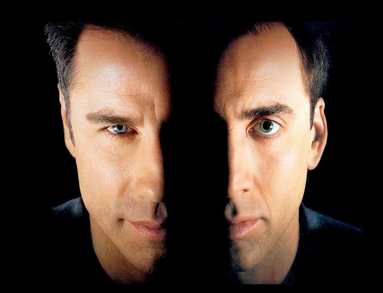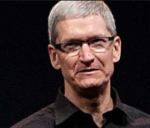
Often innovation succeeds or fails by the personal involvement and engagement of a ‘selected’ few- they make it happen as they are the heavyweights that have the final say.
We all need to recognize the type of innovative leadership personality within our organization, the ones we are working for, as this might help you manage the innovation work a whole lot better and attract the resources you need.
So can you recognize the traits of your innovation leader?
Are they front-end or back-end innovation leaders? Here’s how you can begin to spot the difference.
The thinking about this came from this book.
A book recently published “Innovation Governance- how top management organizes and mobilizes for innovation”, written by Jean-Philippe Deschamps and Beebe Nelson is one I can totally recommend it as it is so rich in thinking around managing innovation.
The author’s view argues that organizations are traditionally tribal and often each group possesses its own rules, and its own judgement of what is important and this ‘creates’ the absolute need to have a mechanism or strong personalities that can ‘cut’ across these potential barriers.
One suggestion coming from this book is recognizing your innovation leaders
According to the authors of “Innovation Governance”, you need the right combination of front-end and back-end leaders, since the two types are complementary. They are able to lead and manage these tribes.
The best way to identify these two types of leaders is often their functional orientation, possible background disciplines and their general management interest and attitudes.
A good example of this ‘divide’ is between Steve Jobs and Tim Cook of Apple, as highly visible and well cited in personality, backgrounds and interests, in what we read. As described well within the book this difference is best illustrated by this Apple leadership comparison.
The front-end leader
 Steve Jobs was clearly a front-end leader. He constantly sought out more radical creativity in design and end product results.
Steve Jobs was clearly a front-end leader. He constantly sought out more radical creativity in design and end product results.
- He had a real passion for new ideas, exploring and combining different thinking and designs, and searching for solutions to customers’ un-articulated needs to improve their product experience.
- He was constantly questioning the status quo and challenging (extremely hard) and confronting the team around him with constant how, what if, what else and why not type of questions.
- He had a more entrepreneurial flair and more of a venture capital mentality regarding returns and risks; he kept focusing on ‘big win’ promises, instinct often drove him.
- He had this belief to constantly experiment, to open up new paths and different thinking and he looked to accept risk and tolerate failure by moving through the ‘dwelling stage’ into the ‘learning from’ set of insights.
- He encouraged individuals to have a degree of freedom, he challenged them constantly, and he expected a climate of mental adventure and excitement to attract others into the organization but these were made up of a diversity of backgrounds. Yet he was, by all accounts a control freak. Nothing passed without his agreement
- His own background was rich in diversity and inquiry and he draw often from this and he portrayed himself as a rebel
- He held onto his vision, yet was prepared to adjust the pathway towards one that responded to meet breaking opportunities.
- Finally, his tolerance levels were often ‘explosive’ but he generated a level of commitment to producing some of the stands out products of recent years.
The back-end innovation leader
 It is often questioned why Tim Cook took over when Steve Jobs died. He is seemingly the archetypal back-end guy.
It is often questioned why Tim Cook took over when Steve Jobs died. He is seemingly the archetypal back-end guy.
He was credited with managing the Apple supply chain, manufacturing and logistics, thus freeing up Jobs to focus on his front end pursuits. Tim Cook comes with more of an operational discipline.
- He focuses on getting products to market flawlessly in cost-effective ways, mastering all the complexity of putting in place the operational foundations necessary to go from concept to launch and roll-out.
- He has an insistence on achieving higher planning quality and expects the process discipline and standardization to make innovation replicable.
- He understands the demand for speed to market through a high level of cross-functional integration and a ‘first-time right’ philosophy in implementation.
- Would have without doubt flexibility in execution decisions, based on detailed operational knowledge and pragmatic risk management.
- That ability to motivate staff for product battles and promotion of the ‘launch and learn’ approach, leads to adapting quickly to improvements, re-launch cycles and even recalls.
- Tim seems to ‘think’ strategically, considers the investment community, amassing cash and systematically picking off areas that maintain Apple’s present higher-end approach.
- He seems to continue to encourage higher value incremental steps, holding on to accepted Apple philosophies and perhaps struggles to ‘go’ for the bold new breakthroughs.
- Tim strikes me as more ‘grounded’, providing for greater stability and managing a maturing organization.
Both Steve Jobs and Tim Cook have strong leadership skills, they both have ‘got’ innovation but their approaches and acceptance levels would have been coming from their different approaches, personalities and backgrounds. They both got detail.
Strong leaders with distinct personalities need understanding. Otherwise, you are often forced back to the ‘drawing board’ for deeper reasons than you initially consider. Consider the personality and what ‘ makes up’ their set of experiences and risk profiles to help ‘advance’ your innovative thinking
Balancing the respective innovation clout is always needed.
If you have a front-end leader at the helm of your innovation activities then you need to find the balance of who manages the disciplined operational side, then if you have a back-end leader, who will defend an aggressive front-end agenda?
The appointing of any innovation leader has significant implications, sometimes huge.
This ‘style’ can determine what generates innovation and can determine the passion, commitment and emphasis point that your organization’s innovation will possibly give preference to, and then provide those necessary resources you are needing.
It is well worth understanding where your innovation leader’s personality, background and functional orientation might lie. It might make your task a little easier to attract the funds and resources you need. So many of our innovation concepts die within the organization, often sadly, as they lack sponsorship appeal and simply do not get them excited.
So by appealing to the basic instincts of their personality traits you can perhaps ‘hook them’ into your innovation concept. Once you have their attention you can then ‘open it up’ for why it makes sense to explore further for taking it out into the big wide world.
4 thoughts on “Recognizing your type of innovation leader”
Comments are closed.